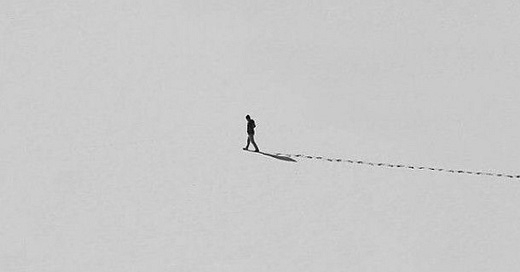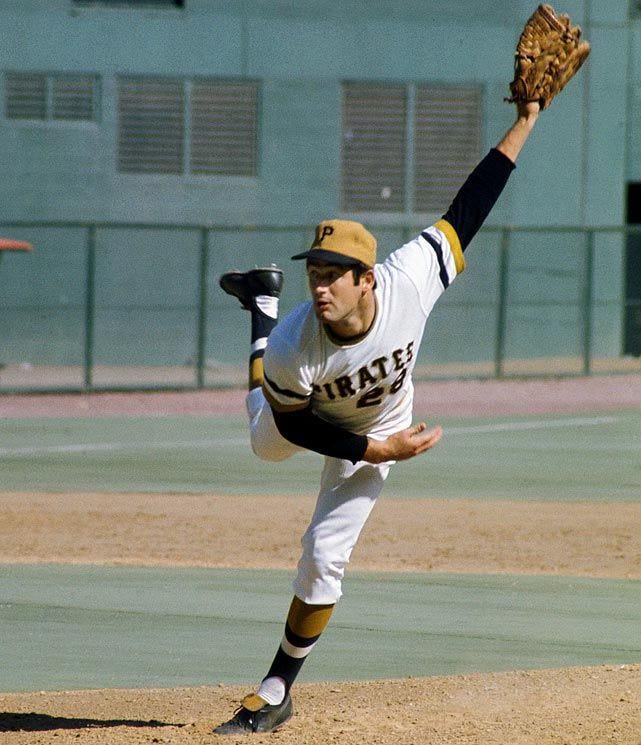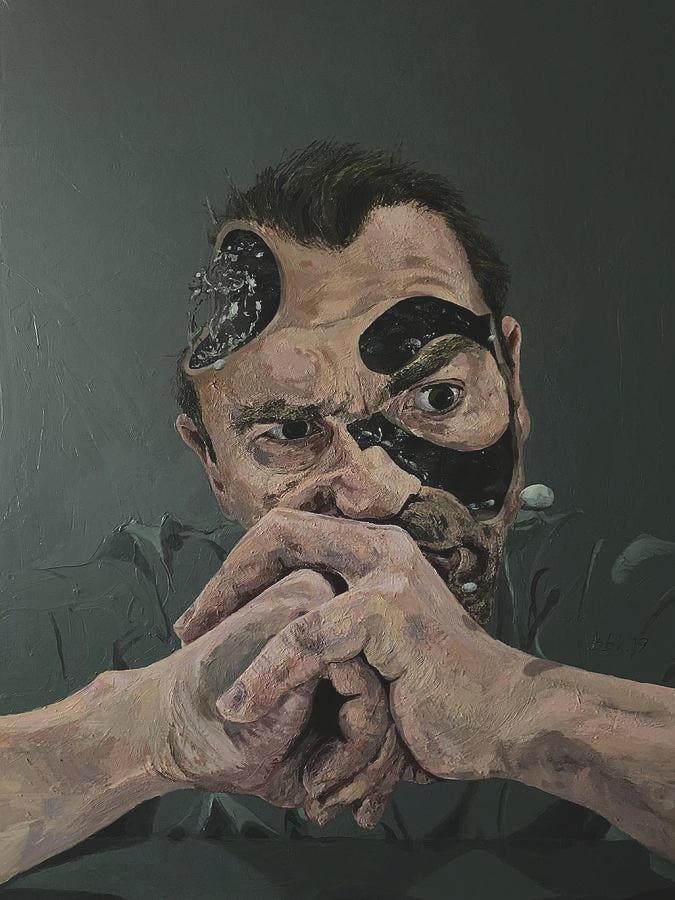Write & Lift is an ethos of personal and spiritual development through conscious physical exertion and practice of the writing craft. Through this effort to strengthen our bodies and minds, we become anti-fragile and self-respecting sovereign individuals. Through this effort, we may stand against untruth and evil and create a new culture of vitality, strength, and virtue.
If this is your first time reading, subscribe here.
The Centipedes Dilemma
Named after the 1871 poem by Katherine Craster, the “Centipedes Dilemma” describes how conscious reflection can lead to a loss of psychological functioning and motor control.
A centipede was happy – quite!
Until a toad in fun Said,
"Pray, which leg moves after which?"
This raised her doubts to such a pitch,
She fell exhausted in the ditch
Not knowing how to run.
In a futile attempt to understand the subconscious, automatic process, the centipede becomes frozen, unable to move and live in the real world.
The Centipedes Dilemma has most often been discussed in the context of sports. This sudden loss of an automatic and learned skill has been called the “yips” a “slump” or a “choke”.
In what might be the most famous case of the “yips” (as it’s called in baseball), all-star pitcher Steve Blass, completely lost his ability to throw a pitch in one year. He went from a 2.49 ERA (The amount of runs the pitcher allows from the other team) in 1972 to a 9.85 ERA in 1973/1974. This sudden loss of motor control would end his baseball career.
Blass said, “I had no control over it, nor did I understand it. I would sit in my backyard 2…3…4 o’clock in the morning thinking, ‘My God, what’s happened to me? What is this? Has someone put a curse on me or something?”
After his retirement, Blass described how the sudden death of his friend and teammate Roberto Clemente in a plane crash ignited an existentialist crisis in him.
Those illusive questions: Why are we here? What will be my legacy? What matters? Questions and thought patterns that pull us from the present moment, that pull us away from the compulsion to act and be in the world.
This is often the case with otherwise intelligent and conscientious people who slide into addiction, resentment, and inaction. Life throws us all curveballs and if we’ve built a mental foundation on shaky ground, it takes one gust of wind to knock our house over. When we’re in the spiral it can feel impossible to pull ourselves back out.
The Hole of Introspection
We won’t find answers or enlightenment staring prolonged into the mirror. What we’ll find are blemishes, clogged pores, and age-lines. Conscious, critical introspection isn’t a path to productivity, virtue, or the “deeper self”. More often than not, it leads us deeper into anxiety and irrational judgment. Instead of focusing on the 20% of effort that will yield 80% of our results, we become trapped in the distortions of our minds. It’s akin to driving with the parking brake on.
Those who spend their entire lives seeking an unknowable and amorphous “truth” have committed themselves to mental purgatory. Truth is. It’s reflected in nature, family, and our desire to do good work. No ashram, meditation practice, or strange tantric sex practice with strangers will reveal anything that doesn’t already exist.
This is often reflected in the “seekers paradox”. The more you seek, the less you find.
My rural California town is full of white dudes with dreadlocks, sun-baked girls marked up with sacred geometry tattoos, park drum circles, and sprinter vans with cluttered dashboards of dried sage and tarot cards. I know many of these people. They are usually well-intentioned, kind, and interesting people. But a vast majority are caught in a destructive introspective cycle. When I do work at my local Kava bar I see and hear the same themes every day.
“I’ve been doing a lot of deep work lately to manifest the income I need.”
“I had another acid trip last weekend at the festival and realized that we’re all just energy flowing in and out of each other.”
“I recently opened up my relationship and it’s forcing me to sit with my own concept of self-worth and jealousy in a really uncomfortable but important way.”
Just as a talented pitcher will lose his ability to throw a fastball when he’s actively thinking about the rotation of his hips, the angle of his elbow, and the positioning of his feet, an otherwise well-adjusted person will slide into destructive habits and emotional detachment when they begin to analyze and question their subconscious.
You’re not “moving through difficult emotions and feelings” because you entered into a polyamorous relationship, you’re getting cucked and it feels like shit. You know you don’t want this.
You’re not living paycheck to paycheck because the universe hasn’t “revealed the right path”, you’re avoiding doing the thing you know you need to do.
The unconscious mind is not something that we can ever know. Our job is to listen to it, to find patterns, and to parse out the dormant instinct in all of us that tells us “move in this direction”.
The rise of “therapy culture” has convinced us that more self-reflection is always a good thing. And while it’s necessary to take a third-person view of ourselves on occasion, when we make a habit of looking inward, we’re trusting that some unknowable seed of golden truth inside of us somehow has a revelation in waiting. The Wright brothers didn’t look “inward” when building their first aircraft, they looked at nature. They looked at the truth right before their eyes.
The Centipedes Dilemma shows us that our thoughts are not where we find momentum for growth and action. They are a map, but not the territory. If we want to learn, if we want to avoid the trap of self-deception and loss of control, the best thing we can do is choose a direction that we think will bear fruit and go towards it.
Fuck around to find out.
As always, thanks for reading
-Joe








